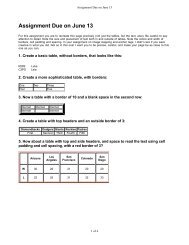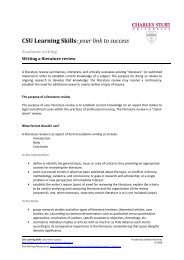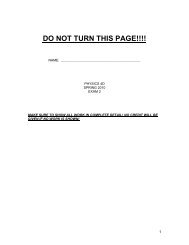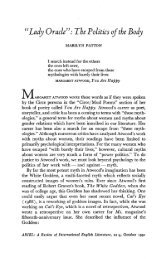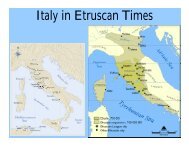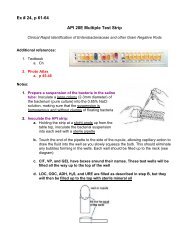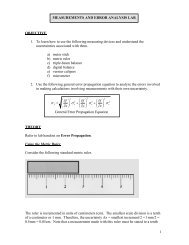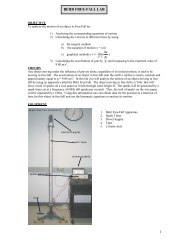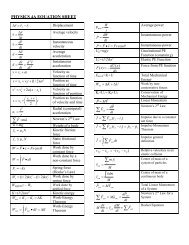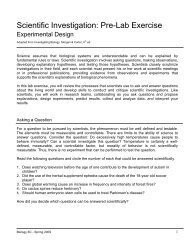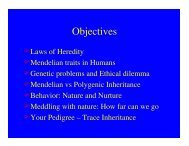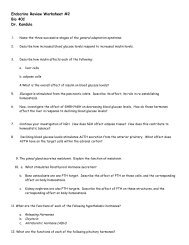Introduction to Chordates & Fish Anatomy - De Anza College
Introduction to Chordates & Fish Anatomy - De Anza College
Introduction to Chordates & Fish Anatomy - De Anza College
Create successful ePaper yourself
Turn your PDF publications into a flip-book with our unique Google optimized e-Paper software.
Early development of chordates<br />
The defining features of chordates appear early in development.<br />
Gastrulation<br />
Like other animals, chordates<br />
progress through blastula<br />
and gastrula stages.<br />
Gastrulation not only forms<br />
the beginning of the digestive<br />
tract, it also forms the three<br />
embryonic tissue types:<br />
endoderm, mesoderm, and<br />
ec<strong>to</strong>derm.<br />
The diagram at right shows<br />
gastrulation in a frog. The<br />
process is somewhat similar<br />
<strong>to</strong> gastrulation in echinoderms<br />
(as shown in last<br />
week’s handout on animal<br />
tissues and development).<br />
However, chordate<br />
gastrulation is somewhat<br />
more complex, partly<br />
because the early embryo is<br />
more asymmetrical and more<br />
filled in with cells.<br />
<strong>Chordates</strong> are deuteros<strong>to</strong>mes.<br />
This means that the<br />
blas<strong>to</strong>pore (the opening in<strong>to</strong><br />
the archenteron that forms<br />
during gastrulation) becomes the anus; the mouth forms later. Echinoderms are also<br />
deuteros<strong>to</strong>mes, but annelids and arthropods are pro<strong>to</strong>s<strong>to</strong>mes. In those phyla, the blas<strong>to</strong>pore<br />
becomes the mouth, and the anus forms later. This is one of the reasons that chordates are<br />
considered <strong>to</strong> be more closely related <strong>to</strong> echinoderms than <strong>to</strong> arthropods.<br />
No<strong>to</strong>chord formation<br />
The no<strong>to</strong>chord, one of the unique defining characteristics of chordates, is a semi-stiff rod of<br />
connecting tissue that forms in the embryo and <strong>to</strong> guide the development of the vertebral<br />
column (backbone) of vertebrates, along with other structures. In your own body, the no<strong>to</strong>chord<br />
has mostly disappeared; the only remnants are the cartilaginous disks between your vertebrae<br />
Neurulation<br />
Neurulation forms the dorsal hollow nerve cord in a developmental event that bears some<br />
resemblance <strong>to</strong> gastrulation. The dorsal hollow nerve cord is another unique feature of<br />
chordates.<br />
Following gastrulation, the presence of a no<strong>to</strong>chord induces neurulation of the overlying dorsal<br />
ec<strong>to</strong>derm. This third stage of morphogenesis is unique <strong>to</strong> chordates. The ec<strong>to</strong>derm above the<br />
no<strong>to</strong>chord thickens <strong>to</strong> form the neural plate. This plate then invaginates <strong>to</strong> form a furrow along<br />
the anterior-posterior axis. The folds along the groove eventually seal over the furrow <strong>to</strong> form the<br />
Brian McCauley & Bruce Heyer 11/18/07 Page 2 of 13



